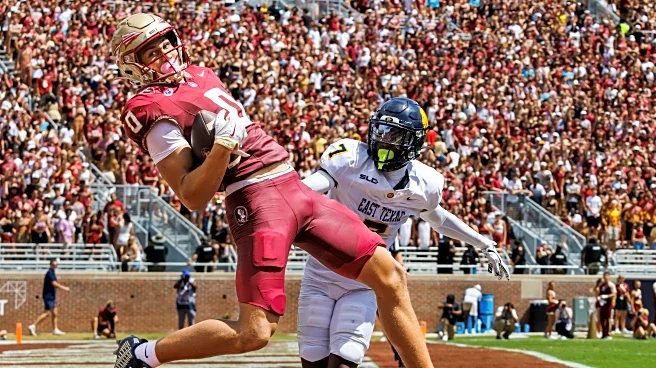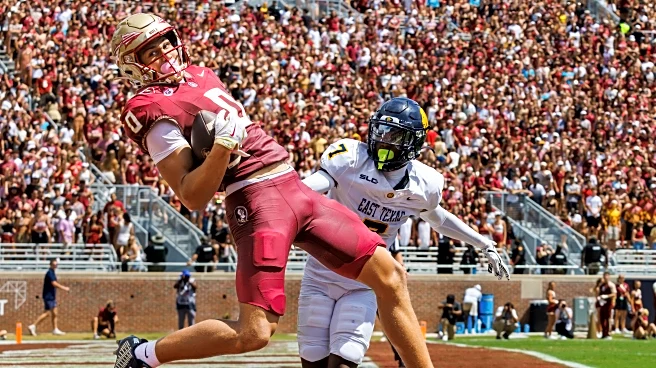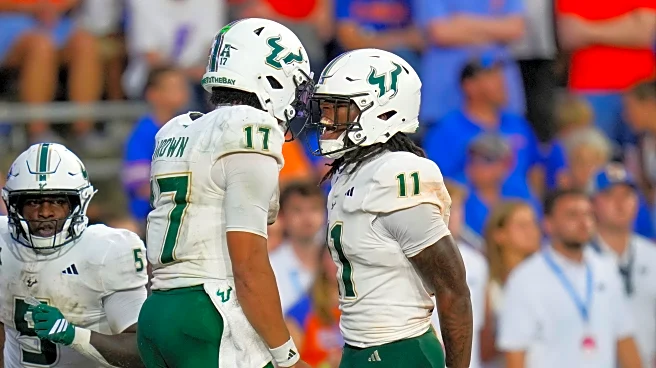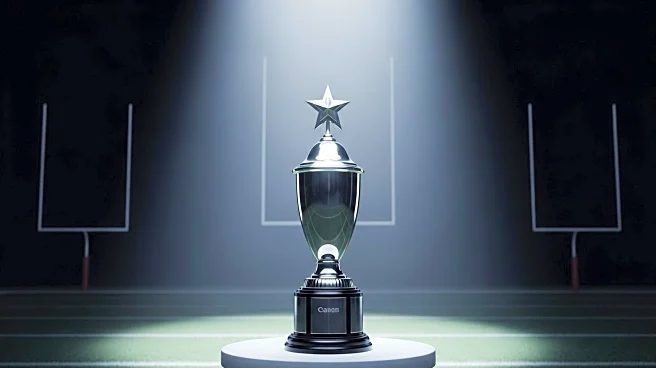What's Happening?
On a historic Saturday in college football, eight games were decided by margins of 60 points or more, marking the most such games in a single day since the AP poll era began in 1936. Notable blowouts included Grambling State's 70-0 loss to Ohio State, Florida State's 77-3 victory over East Texas A&M, and Alabama's 73-0 win against Louisiana-Monroe. These games underscore the financial disparities between larger programs and smaller schools, as many smaller teams receive substantial payouts to play against powerhouse teams. For instance, Grambling State received $1 million from Ohio State, while Alabama paid Louisiana-Monroe nearly $2 million.
Why It's Important?
The financial arrangements in college football highlight the economic challenges faced by smaller programs. These payouts are crucial for the athletic departments of smaller schools, providing significant funding that supports various sports and facilities. However, the lopsided nature of these games raises questions about competitive balance and the impact on player morale and development. While larger programs benefit from easy wins and increased exposure, smaller schools must weigh the financial benefits against the potential negative effects of repeated heavy losses.
What's Next?
As the college football season progresses, discussions around the financial dynamics of these matchups may intensify. Stakeholders, including athletic directors and conference officials, might explore ways to ensure more competitive games while still providing financial support to smaller programs. Additionally, there could be increased scrutiny on how these financial disparities affect the overall landscape of college sports, potentially leading to reforms in scheduling and compensation practices.
Beyond the Headlines
The ethical implications of these financial arrangements are significant. While the payouts provide necessary funding, they also perpetuate a cycle where smaller programs are consistently outmatched, potentially affecting the long-term viability of their football programs. This dynamic may also influence recruitment, as players may prefer schools with more competitive schedules and better resources. The cultural impact on college sports, where tradition and competition are highly valued, could lead to broader discussions about the future of these financial practices.













